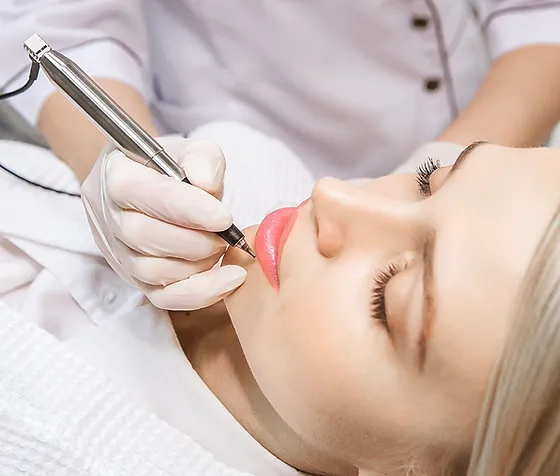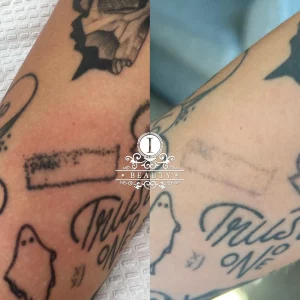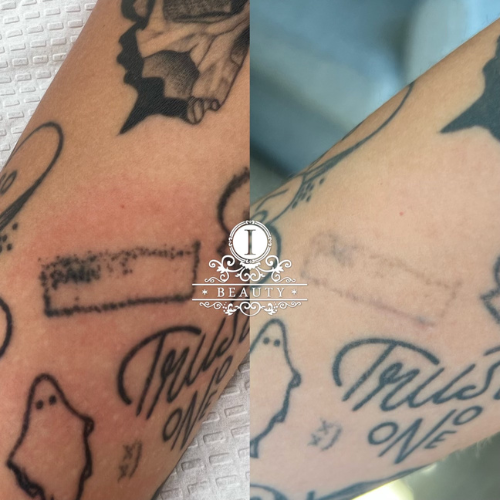Aging is a natural part of life, and it’s normal for eyebrows to thin, lips to lose their youthful hue, and skin to show signs of a life well-lived. However, just because these changes are natural doesn’t mean you must live with them if they bother you. At iBeauty Makeover, we specialize in semi-permanent makeup solutions designed to help you reclaim a more vibrant and youthful appearance.
Understanding Pigment Loss with Aging
As we age, our skin undergoes various changes, including pigment loss. This often manifests as graying hair, lighter skin, and less defined features. These changes are primarily due to alterations in melanin production and the reduction of skin pigment-containing cells (melanocytes). Additionally, the decrease in estrogen levels, especially during menopause, affects skin health by reducing collagen production, which is crucial for maintaining skin density, elasticity, and hydration.

Effects of Pigment Loss on Facial Features
- Eyebrows: With age, eyebrows may become lighter and sparser as pigment cells in the hair follicles decrease. This can result in less defined eyebrows, affecting the overall impact of your facial expressions.
- Eyes: Reduced melanin production can lead to lighter and thinner eyelashes, diminishing their dark framing effect on the eyes. The skin around the eyes may also become more translucent, contributing to a tired appearance.
- Lips: Lips can lose their color and definition over time, making them appear less vibrant and expressive. The vermilion border may blur, reducing the distinct separation between the lips and surrounding skin.
semi-permanent Makeup Solutions
Non-Surgical Options to Restore Your Youthful Look
At iBeauty Makeover, we offer a variety of non-surgical treatments tailored to enhance your natural beauty and address the effects of aging.
Eyebrow Microblading
Revitalize thinning or graying eyebrows with microblading, a semi-semi-permanent tattoo technique. Using a manual handheld tool, we create fine, natural-looking strokes that mimic natural hairs, giving your eyebrows a fuller, more defined appearance.
Nano Brows
For precise, hair-like strokes, consider Nano Brows. This advanced method uses a super-fine needle to create detailed, natural-looking eyebrows. It’s particularly effective for mature or oily skin types and ensures long-lasting, beautifully defined brows.
Ombre Brows
With ombre brows, you can achieve a soft, shaded effect. This technique uses a machine and a specialized needle to deposit pigment, creating a gradient look that mimics filled-in eyebrows. It’s ideal for mature skin and can cover previous eyebrow work.
Eyeliner Tattoo
Enhance the natural contours of your eyes with a semi-permanent eyeliner tattoo. From subtle lash enhancements to more pronounced lines, this treatment offers a variety of styles to make your eyes stand out without daily makeup application.
Lip Blushing and Lip Lining
Restore your lips’ youthful color and definition with Lip Blushing and Lip Lining. These semi-permanent makeup techniques enhance your lips’ natural hue and contours, providing a vibrant, symmetrical, lasting look.
Eyebrow Tattoo Removal and Refresh
Update your look with our Eyebrow Tattoo Removal and Refresh services. Whether you must correct previous work or refine your brow shape, our non-laser removal methods offer a gentle and effective solution.
Scar Camouflage
With our Scar Camouflage technique, you can seamlessly blend scars into your natural skin tone. We use carefully matched pigments to reduce the appearance of scars, enhancing your overall look.
iBeauty Makeover: Your Destination for Timeless Beauty
semi-permanent makeup is an excellent way to rejuvenate and enhance mature skin, offering a timeless beauty that simplifies your daily routine. At iBeauty Makeover, our expert team is dedicated to helping clients of all ages achieve their desired look through customized semi-permanent makeup treatments.
Our certified semi-permanent makeup artists stay up-to-date with the latest techniques and trends to provide the best possible results. Embrace the convenience and beauty of semi-permanent makeup, and let your natural beauty shine with minimal effort.
Contact iBeauty Makeover today to schedule a consultation or learn more about our semi-permanent makeup solutions for mature skin. With our expert treatments, you can rediscover your youthful vibrancy and enhance your natural features.
Experience the transformative power of semi-permanent makeup at iBeauty Makeover. iBeauty Makeover is located at 1650 S Dixie Hwy Suite 401AA, Boca Raton, FL 33432. See what our clients have to say by checking out our reviews on Google!




